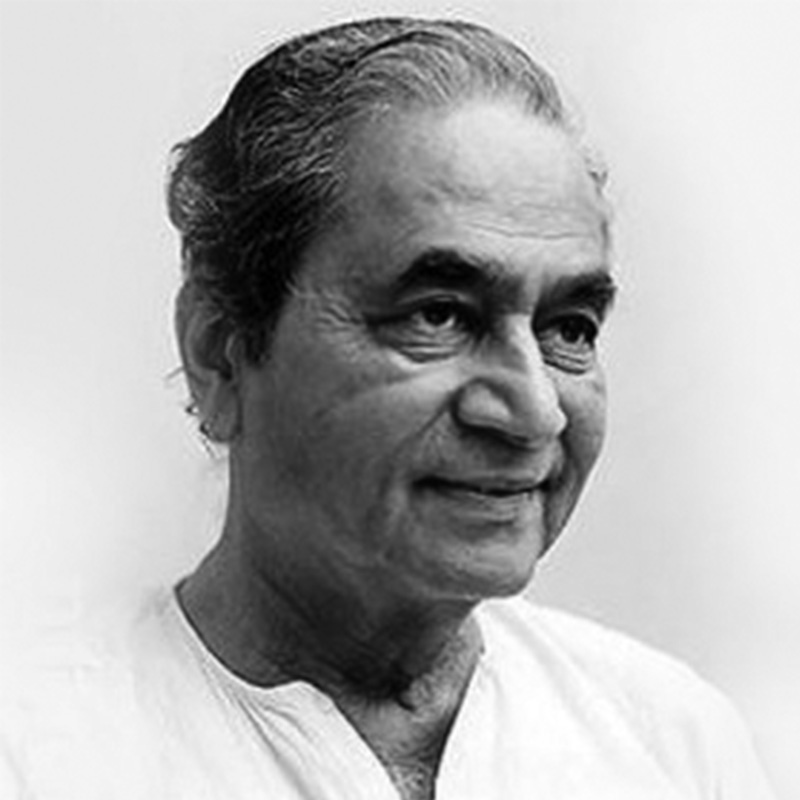
Badri Narayan (1929-2013) was born in Secunderabad, Andhra Pradesh. Though he had no formal training, Narayan held over fifty solo shows throughout his career, the first in 1954. He worked as an art teacher, artist, and author, and always remained a deeply introspective individual.
Narayan worked largely in ink, pastel, and watercolour, but also produced etchings, woodcuts, tiles, and ceramics. A believer in two-dimensionality, his paintings are intimate and small in format, often intertwined with an element of fantasy. His paintings evoke his unique perspective of beauty and aesthetics, and contemplative in mood, the central figures in these compositions are often rendered in what seems to be a dream-like state. They suggest a calm moment of reflection; the figures bound to each other are simultaneously engrossed in their own thoughts.
A natural storyteller, Narayan found narration came to him with ease and proficiency. He used this skill to manipulate the symbolism and popular icons of rich Indian culture and tradition in his oeuvre, creating his own narrative. He drew heavily from Indian mythology and metaphors, acknowledging the influence of the Indian miniature tradition in his works. He was also inspired by imagery from his surroundings, becoming an integral part of his creative journey, where he followed his own instinct and experimented with diverse media, forms, and platforms.
Apart from teaching art, he also authored short stories, verse, and illustrated children’s books. Narayan was also the subject of a documentary by Mumbai All India Radio, and was also the recipient of numerous awards, including the Padma Shri in 1987 and the Maharashtra Gourav Puruskar in 1990.
Narayan passed away in 2013 in Bangalore.